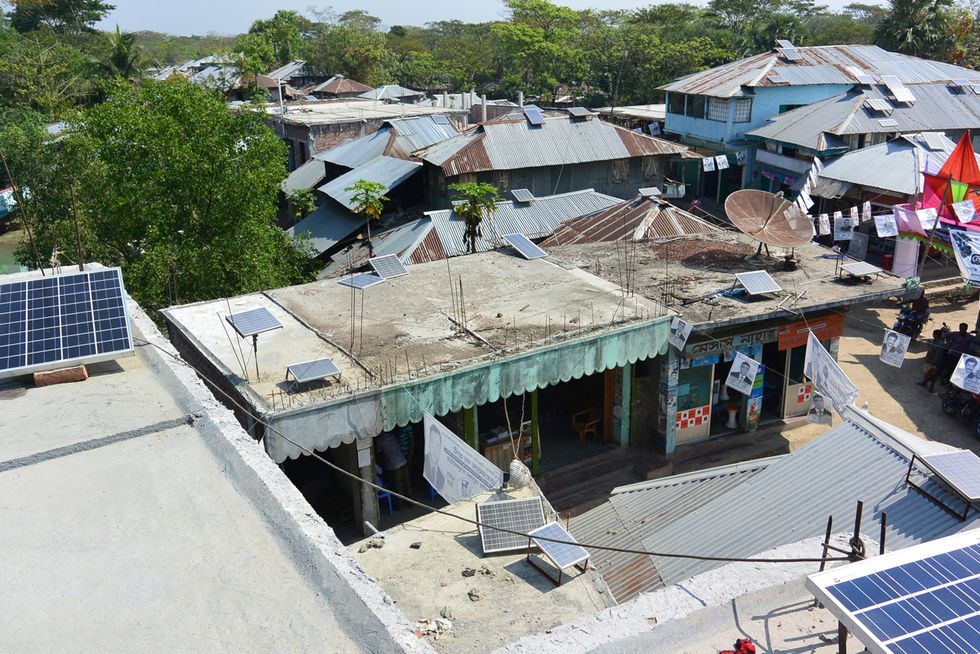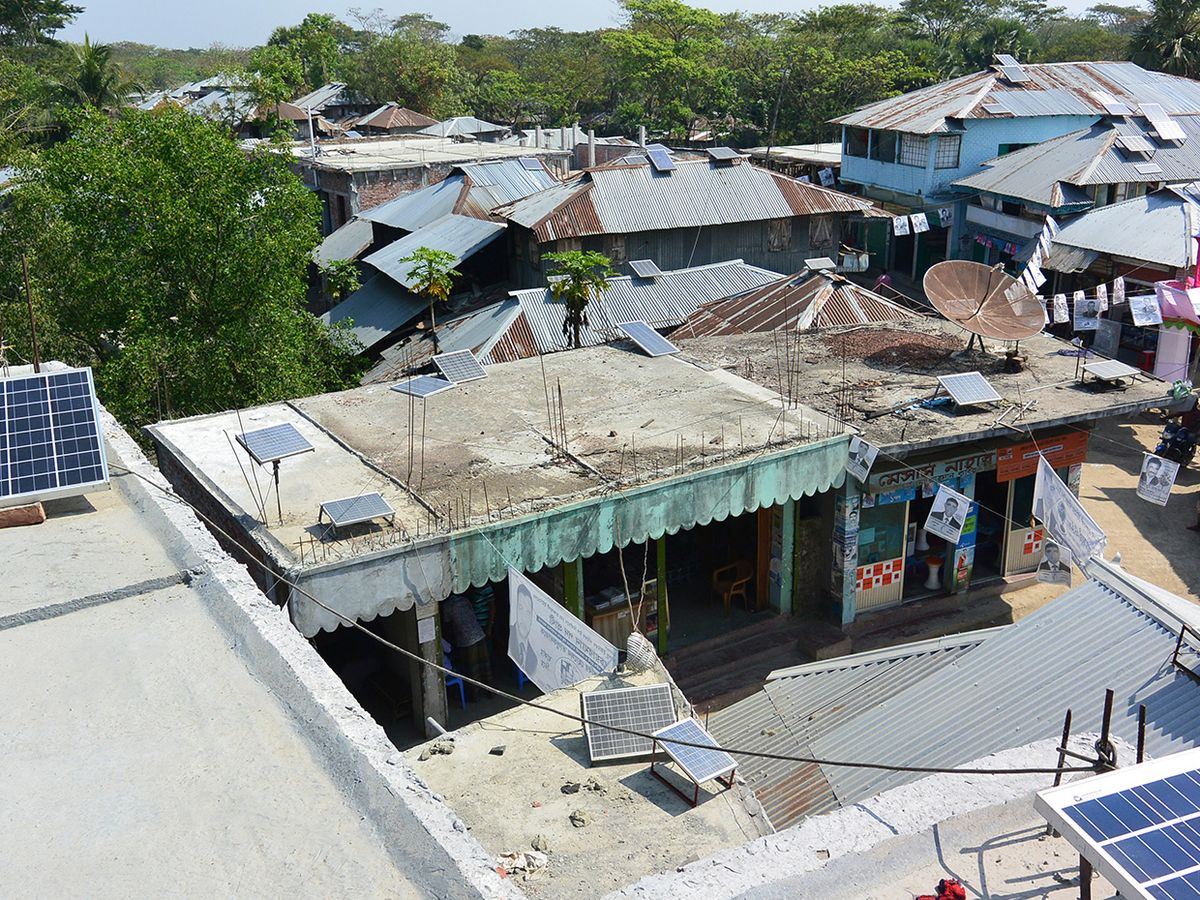
Bangladesh hosts the world’s largest collection of off-grid solar energy systems. Rooftop panels and batteries electrify over 4 million households and businesses there. The Dhaka-based startup ME SOLshare believes it has the technology to link these systems and foster a solar energy-sharing economy. If the company succeeds, home systems will morph into village minigrids, offering wider access to more power at lower cost.
SOLshare’s European founders—Sebastian Groh, Hannes Kirchhoff, and Daniel Ciganovic—conceived their “swarm electrification” power-sharing platform during grad-school brainstorming sessions in Germany and California. The three moved to Dhaka to define, engineer, and launch their product, starting with power measurements in off-grid solar homes.
What Groh and his cofounders discovered upon arrival in 2015 was plenty of spare power going to waste. Typically, the batteries in home systems are sized to capture the power generated during the relatively dim monsoon season. As a result, during much of the year there is extra power available that isn’t captured. On average, about 30 percent of each system’s potential output is lost.
SOLshare’s technology is designed to share this extra power. A smart power controller, called a SOLbox, is installed in each home or business and linked with cables to other local SOLboxes to form a DC distribution grid. The SOLbox enables users to set how much power they want to share with or draw from the network, and at what price.
ME SOLshare
Founded: 2015
Headquarters: Dhaka, Bangladesh
Employees: 30
Founders: Sebastian Groh, Hannes Kirchhoff, Daniel Ciganovic
Capital raised to date: US $500,000
The SOLbox handles the accounting, too, reconciling power purchases and sales—as well as SOLshare’s brokerage fee—via each user’s mobile money wallet. Wireless communications allow SOLshare to optimize power flows over the meshed DC grids to minimize bottlenecks and line losses.
All the equipment is engineered and assembled in Dhaka. Marketing, installation, and maintenance occur in partnership with Bangladesh’s leader in solar home systems, Grameen Shakti, with which SOLshare split a US $1 million prize from the United Nations in November.
SOLshare installed seven grids, connecting a total of 150 homes between 2015 and 2017—what Groh terms the company’s “experimental” phase. Now it has begun to scale up. In January, for example, SOLshare began work in a tightly packed community where it could connect up to 1,500 homes.
As the minigrids scale up, so should their value. More power on the grid, for example, means users can run comparatively power-hungry devices such as refrigerators.
The question is whether SOLshare can entice enough villagers to join. Part of that will mean squeezing the cost of the SOLbox so that it adds less than 10 percent to the total price of the solar system. “We’re below $100 and transitioning right now to a next-generation SOLbox below $50. But we want to go down even further,” says cofounder and chief technology officer Kirchhoff.
Selling SOLshare’s vision also requires trust. Villagers are sensitive to the risk of being exploited by outsiders—especially foreigners. “At first, people are reluctant to give access to an asset that they have paid for, for two or four years, with a large portion of their income,” says Kirchhoff.
Peter Asmus, a microgrid analyst with Navigant Research, says planning for solar home systems has not kept pace with their accelerating deployment. He says SOLshare’s swarm electrification approach has merit and could find demand in densely built rural communities well beyond the Indian subcontinent.
Sticking with DC makes a lot of sense, says Asmus, since there is a growing world of DC appliances that village residents and businesses yearn to plug in. As Asmus puts it, “When people get a little electricity—enough for a light or a cellphone—pretty soon they want more.”
This article appears in the April 2018 print issue as “ ‘Swarm Electrification’ Powers Villages.”
